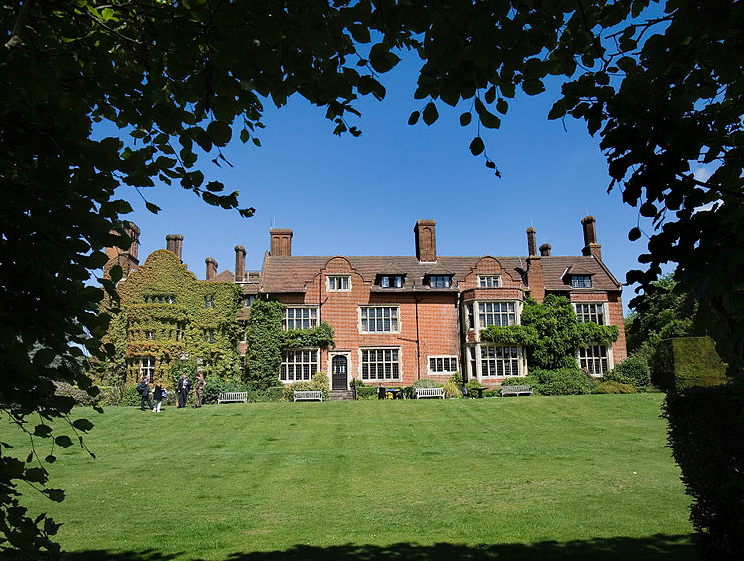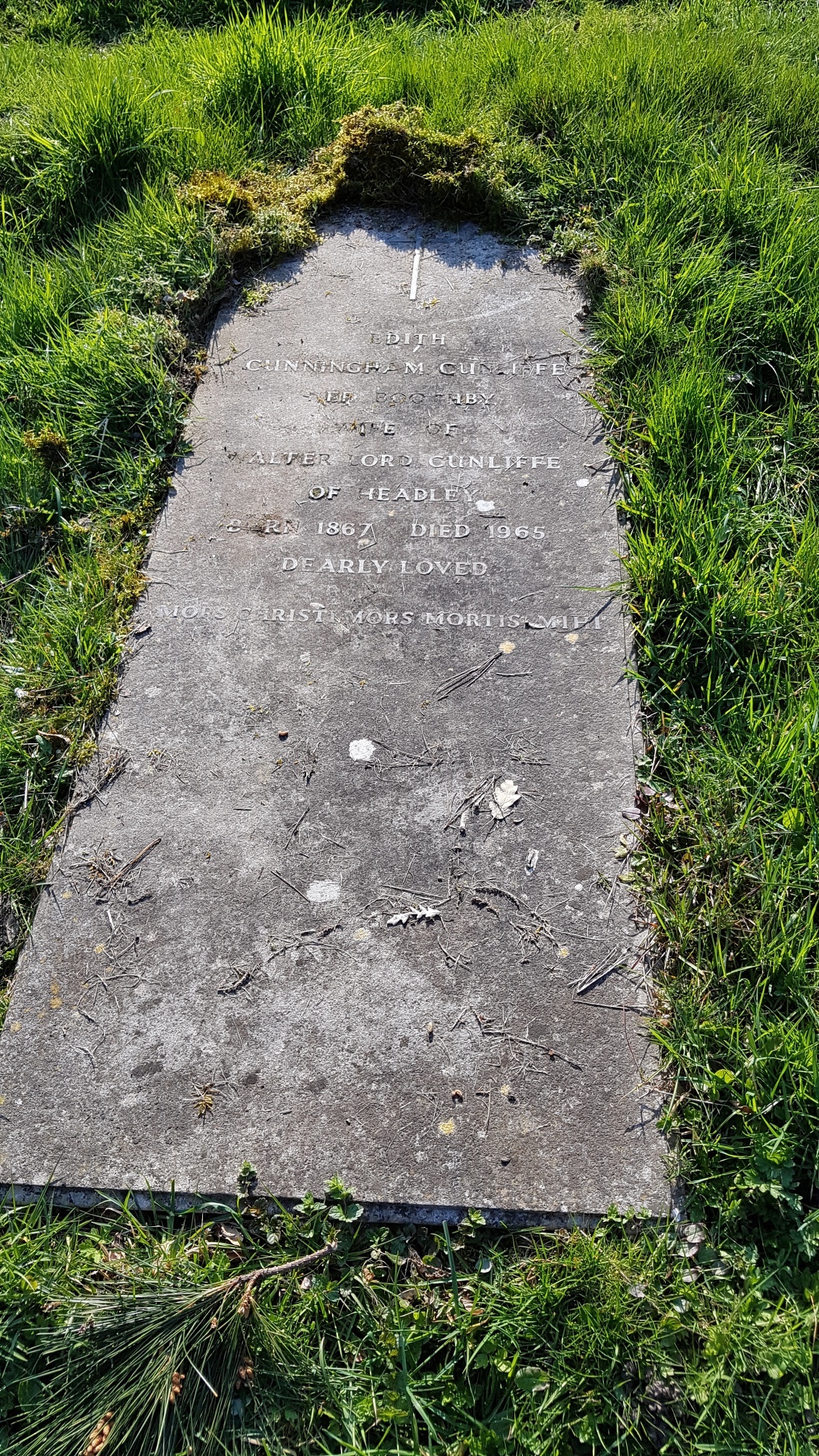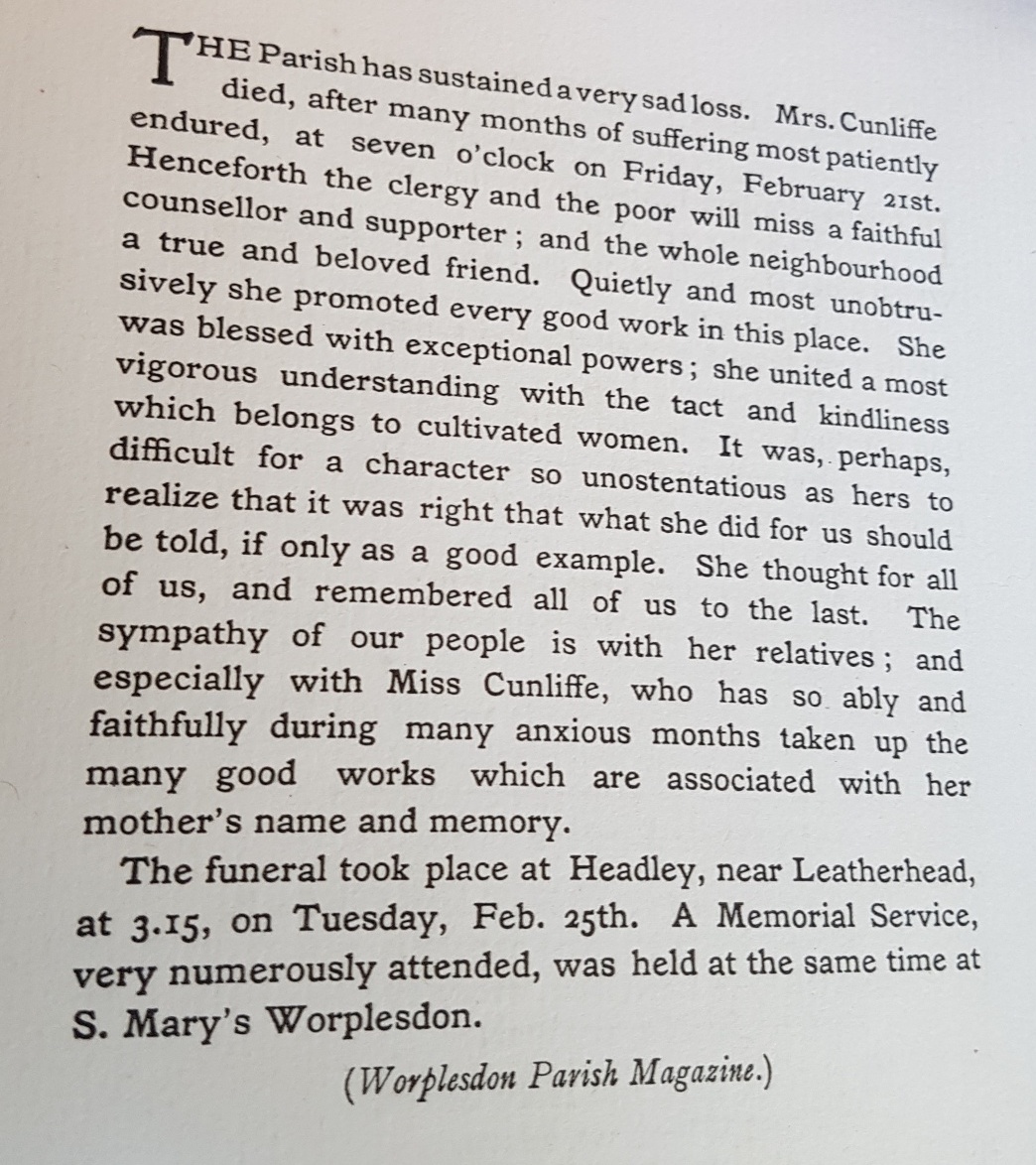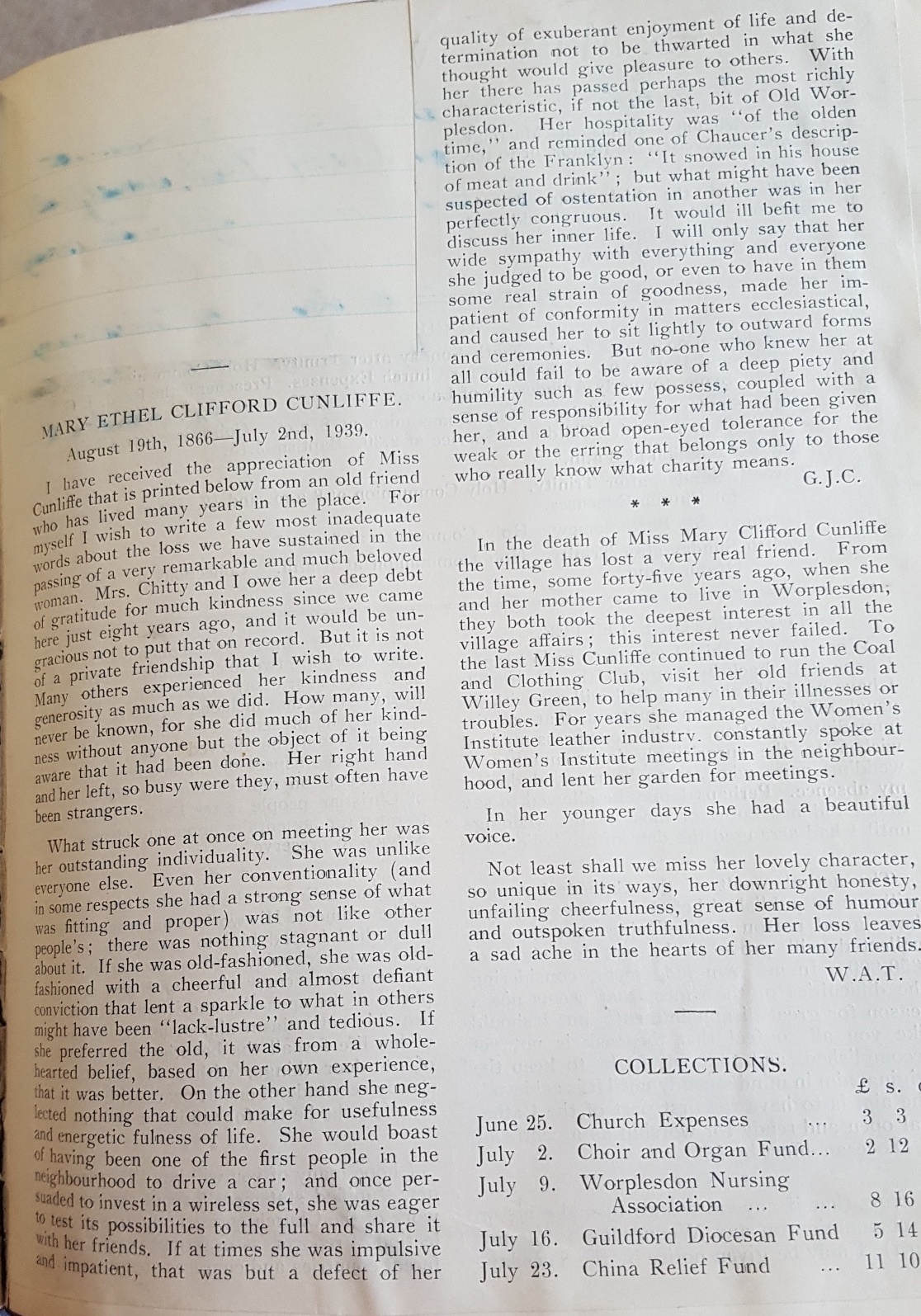- Stay Connected
 Abraham Lincoln
If given the truth, the people can be depended upon to meet any national crisis...
Abraham Lincoln
If given the truth, the people can be depended upon to meet any national crisis...
 Guildford news...
for Guildford people, brought to you by Guildford reporters - Guildford's own news service
Guildford news...
for Guildford people, brought to you by Guildford reporters - Guildford's own news service
Mystery Of Why Baroness From Headley Court Is Buried At Worplesdon
Published on: 11 Apr, 2020
Updated on: 13 Apr, 2020
Worplesdon historian Jan Messinger has found a gravestone in St Mary’s Churchyard, Perry Hill, of Edith Cunliffe of Headley Court near Leatherhead.
It being the same day (March 26) it was announced Headley Court is being re-opened as a temporary community hospital for Coronavirus patients.

Headley Court near Leatherhead. Image from Wikimedia Commons.
Between 1985 and 2018 Headley Court became well known as a rehabilitation centre for injured members of the British Armed Forces, although it had first been requisitioned for military use during the Second World War. However, within its long history it was once the home of the extremely wealthy Cunliffe family.
Originally an Elizabethan farmhouse, it was bought by the Cunliffes, of Tyrrell’s Wood, Leatherhead, in 1880. A Walter Cunliffe took possession and had an imposing mansion built on the Headley Court estate.
Jan has discovered that Edith (nee Cunningham Boothby) was the second wife of Walter Cunliffe, 1st Baron Cunliffe (1855-1920). He was a banker and the Governor of the Bank of England from 1913 to 1918. The Cunliffe’s family fortune had first been made by his grandfather.
Walter is buried in St Mary’s Churchyard, Headley, but why was Edith (styled as Baroness Cunliffe on December 14, 1914) who died aged 95 on November 22, 1965, buried in Worplesdon?

Baroness Edith Cunliffe’s grave in St Mary’s Churchyard, Perry Hill, Worplesdon.
In Jan’s research over the past week she has discovered a great deal, including that Annie Cunliffe (nee Crighton) is listed as a widow, resident at The Firs, Perry Hill, Worplesdon on the 1891 census and at Worplesdon St Mary on the 1901 census. She was aged 61 in 1901.
She died on February 21, 1902 and was buried at Headley on February 25. Interestingly, a funeral service was held simultaneously at St Mary’s Church, Worplesdon.
An existing memorial service booklet gives plenty of details, listing her husband as Henry Cunliffe, and includes: “The service was read by the Rev D. C. Tovey, Rector of Worplesdon, assisted by the Rev P. M. Barnard, Rector of Headley. At the same time a memorial service was held at the Parish Church St Mary’s Worplesdon. This was conducted by the Rev J. W. Collett, assisted by the Rev A. Krauss, Vicar of Pirbright, and was attended by many from the parish and neighbourhood. With the permission of the Board, the children of the Perry Hill School were also present, to join in this last tribute to the honoured lady who had so constantly and in so many ways contributed to their well-being and happiness.
“Every good work in the parish of Worplesdon was materially indebted for support to Mrs Cunliffe. Among other responsibilities voluntary undertaken, the management of the coal and clothing clubs, and the superintendence and encouragement of the Sunday School, were in her hands: and to her the Working Men’s Institute owes the improved and comfortable building in which it assembles. She united great practical wisdom with the utmost kindness and tact; and throughout her long illness, borne with exemplary patience, was still thoughtful for all the objects of her care.”

A page from the memorial service booklet of Annie Cunliffe, died 1902.
Annie Cunliffe certainly made her mark on Worplesdon, and living with her on the 1891 and 1901 censuses was her unmarried daughter, Mary, aged 34 in 1901.
Finding these details meant the net was closing in on Edith Cunliffe and perhaps why she is buried in Worplesdon.
The link is…. Walter Cunliffe, (1st Baron Cunliffe and husband of Edith) was the nephew of Henry Cunliffe (husband of Annie, who had the simultaneous funeral services).
Annie’s daughter Mary continued to live in Worplesdon until she died on July 2, 1939. She too left her mark on Worplesdon.
Tributes to her published in the parish magazine included: “Even her conventionality (and in some respects she had a strong sense of what was fitting proper) was not like any other people’s; there was nothing stagnant or dull about it. If she was old-fashioned, she was old-fashioned with a cheerful and almost defiant conviction that lent a sparkle to what in others might have been lack-lustre’ and tedious. If she preferred the old, it was from a whole-hearted belief, based on her own experience, that it was better.
“She would boast of having been one of the first people in the neighbourhood to drive a car; and once persuaded to invest in a wireless set, she was eager to test its possibilities to the full and share it with her friends.
“For years she managed the Women’s Institute leather industry, constantly spoke at Women’s Institute meetings in the neighbourhood, and lent her garden for meetings. In her younger days she had a beautiful voice.”

Tributes to Mary Cunliffe, died 1939.
We can only presume that Edith Cunliffe had been a regular visitor to Worplesdon, perhaps staying with Annie Cunliffe and her daughter Mary. She may have been well known to others in Worplesdon, held it fondly in her memory and requested to be buried in St Mary’s Churchyard.
However, that’s not quite the end of the story…. Jan’s research has included the discovery of numerous other snippets of information about the Cunliffe family, including details published on a website called Hove in the Past.
It reveals that Henry and Annie Cunliffe also had a son, also known as Henry, but whose full name was Heinrich James Saint Benno Cunliffe, born in Munich in 1864. It’s possible his father, who was a banker, was working in Germany at the time. The family moved back to England and lived in Hove from 1871 to 1881.
Son Henry (Heinrich) married Edith Woodhead in 1889. However, they later separated and he died in Hove in 1930.
And finally.. down another line of the family is an Alan Percy Cunliffe, who was once well known for his interest in horse racing.
He was a director of Sandown Park racecourse at Esher and his claim to fame appears to be that he owned the horse Aboyer that won the 1913 Epsom Derby at 100-1.
It was of course the race in which Suffragette Emily Wilding Davison fatally threw herself at King George V’s horse, Anmer.
Alan Percy Cunliffe married American actress Malvina Longfellow. He also owned most of Sailsbury Plain, which he rented to the army for training purposes.
Jan concluded: “They all had very interesting lives and were extremely wealthy. It goes on and on.”

St Mary’s Churchyard, Perry Hill, Worplesdon, April 2020, with spring flowers everywhere!
















Frank Phillipson
April 27, 2020 at 2:44 am
The Worplesdon Parish Register records the 1965 burial on the 25th November of “Edith Cunningham Cunliffe” who died at, “68 Oakwood Court, (Kensington) London” and of being, “Late of ‘Worplesdon St. Mary’ Worplesdon” a large house (now divided into three) to the east and above the A322/Holly Lane roundabout.
The England & Wales, National Probate Calendar records her as The Dowager Lady Cunliffe of Headley, Edith Cunningham of 68 Oakwood Court, Kensington, London, died 22nd November 1965. Probate London 20 January to (daughter) the Honourable Ann Madeline Wedderburn-Maxwell married woman and (son) the Honourable Geoffrey Cunliffe, retired company director.
The 1951 telephone directory lists “Cunliffe Lord, Worplesdon St. Mary, Worplesdon 89”.
Betty Leach
September 12, 2020 at 6:19 pm
I found Jan Messinger’s research very interesting, especially as it involved the Women’s Institute.
I looked in my address book which contains names from 1920 but unfortunately no record of these names could be found.
What a lovely lady she must have been.